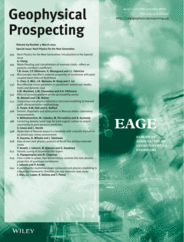-
oa Integrating rock physics laboratory data and modelling to improve uplift characterization methodology
- Source: Geophysical Prospecting, Volume 69, Issue 3, Feb 2021, p. 552 - 567
-
- 30 Sep 2019
- 18 Apr 2020
- 20 May 2020
Abstract
Modelling changes in elastic wave velocities in sediments and rocks as they undergo burial and uplift can reveal aspects of their burial history. This has implications in the petroleum risking procedures, as aspects such as hydrocarbon maturation and reservoir quality are key ingredients. Previous modelling for such a purpose assumes constant velocity and porosity during uplift after the cessation of cementation. Laboratory data of a synthetic sandstone formed under stress, and subjected to loading and unloading cycles are used to test this assumption. The experimental P‐wave velocities show a clear increase in stress dependence during the uplift simulation. Besides, the P‐wave anisotropy transforms from negative to positive. These observations are combined to make an updated modelling workflow to mimic the experimental results better. The modelling is conducted in different phases. Loading before cementation is modelled using a triaxial granular medium theory. For the laboratory data, a novel anisotropic formulation of the patchy cement model captures the observed trends. A modified crack model incorporates the stress sensitivity seen during the unloading that simulates uplift. The results of the integrated rock physics workflow mimic the laboratory data very well. A conceptual field example using the rock physics workflow illustrates how the exclusion of the stress dependence during uplift can lead to an underestimation of the exhumation magnitude.




